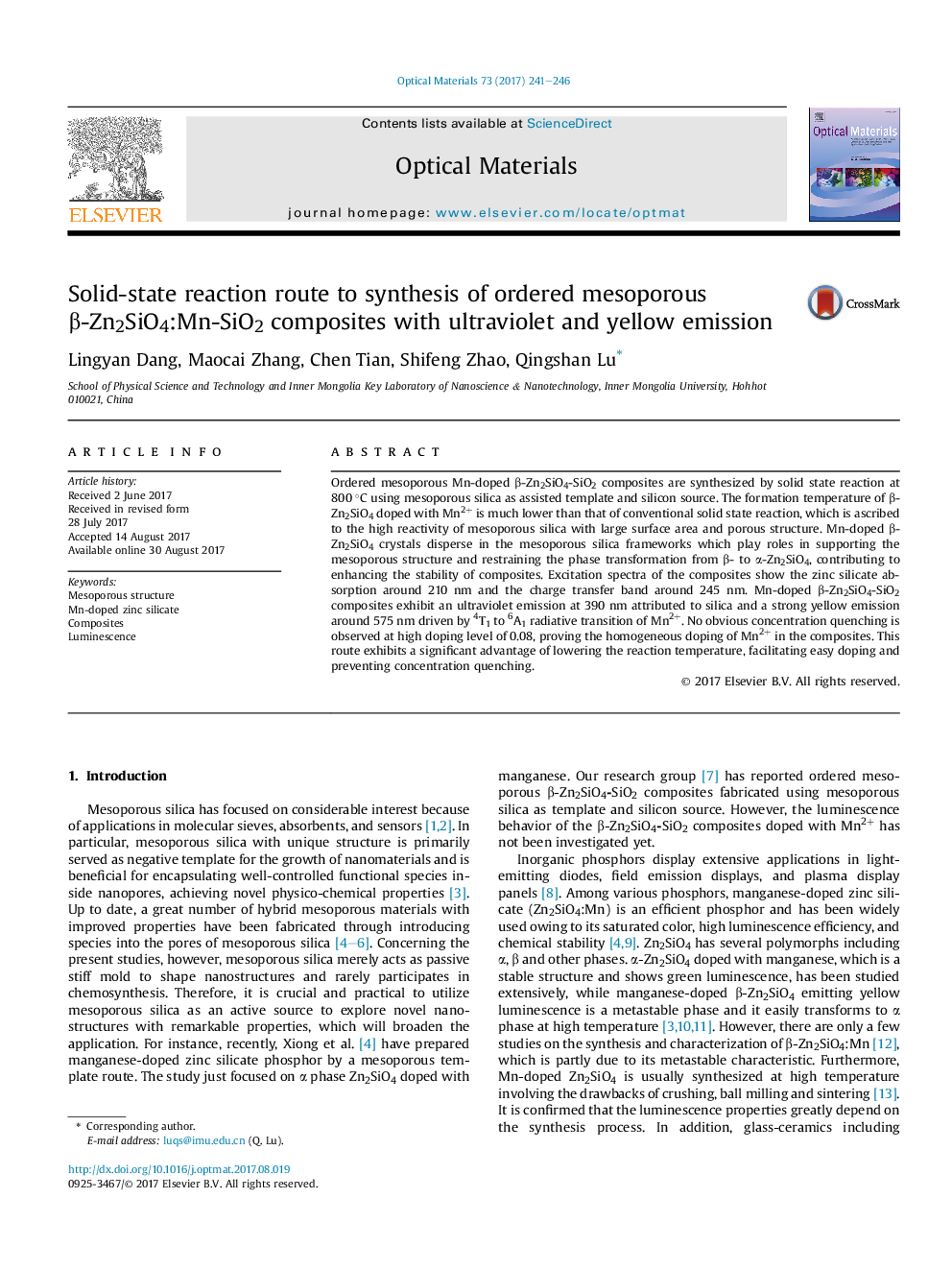| Article ID | Journal | Published Year | Pages | File Type |
|---|---|---|---|---|
| 5442358 | Optical Materials | 2017 | 6 Pages |
Abstract
Ordered mesoporous Mn-doped β-Zn2SiO4-SiO2 composites are synthesized by solid state reaction at 800 °C using mesoporous silica as assisted template and silicon source. The formation temperature of β-Zn2SiO4 doped with Mn2+ is much lower than that of conventional solid state reaction, which is ascribed to the high reactivity of mesoporous silica with large surface area and porous structure. Mn-doped β-Zn2SiO4 crystals disperse in the mesoporous silica frameworks which play roles in supporting the mesoporous structure and restraining the phase transformation from β- to α-Zn2SiO4, contributing to enhancing the stability of composites. Excitation spectra of the composites show the zinc silicate absorption around 210 nm and the charge transfer band around 245 nm. Mn-doped β-Zn2SiO4-SiO2 composites exhibit an ultraviolet emission at 390 nm attributed to silica and a strong yellow emission around 575 nm driven by 4T1 to 6A1 radiative transition of Mn2+. No obvious concentration quenching is observed at high doping level of 0.08, proving the homogeneous doping of Mn2+ in the composites. This route exhibits a significant advantage of lowering the reaction temperature, facilitating easy doping and preventing concentration quenching.
Related Topics
Physical Sciences and Engineering
Materials Science
Ceramics and Composites
Authors
Lingyan Dang, Maocai Zhang, Chen Tian, Shifeng Zhao, Qingshan Lu,
